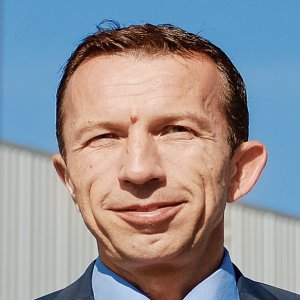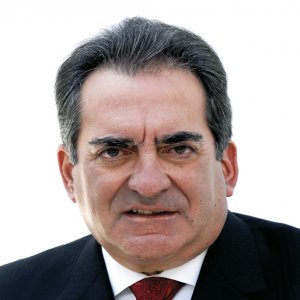Balancing the Long-Term Cost of Ownership

Q: What are the most significant trends in the Mexican market for buses?
A: Each city in Mexico has specific preferences. Trends range from diesel-based engines to natural gas options, vehicles for restricted corridors and different body configurations, such as low or high-entry buses. MAN Truck & Bus strives to offer several products oriented to different needs. For instance, we have a 60 percent market share in the minibus segment, which made us unequivocal leaders for four years in a row.
We are investing in new products that address the market’s needs even more effectively, such as the automatic transmissions that are now included in our 17.280 units, featuring multiple advantages in terms of fuel efficiency and consumption. The company debuted three new bus models at the heavy vehicle exposition, Expoforo 2015, including buses fitted with automatic transmissions, school vehicles for urban and rural applications and a unit specifically designed for touristic and executive ventures. We want to consolidate our brand as a crucial player in the bus segment. Our privileged position as the only double- decker coach distributor helps us achieve our goal but we would also like to increase our presence in the BRT segment in the medium term.
Q: How does the product portfolio of MAN Truck & Bus contribute to your growth strategy?
A: Our product line covers 80 percent of the market’s demands, so our priorities target the segments where we see superior growth potential. Having launched our new Workline family and its 17.230 model, MAN Truck & Bus will now compete in the Class 8 segment. This is the second strongest truck segment, and represents 30 percent of Mexico’s sales. However, MAN Truck & Bus also has a product line that ranges from eight to 26 tons, with engines of between 150 and 540hp and transmissions reaching up to 16 gears, both manual and automatic.
We are working to convince the Mexican market that cab- over trucks offer at least the same benefits as long-nosed units. Cab-over vehicles have significant advantages and our TGX line is fitted with unique technological features that make it highly competitive in the market. The engines also are extremely efficient because we design our vehicles with aerodynamic features that enhance fuel consumption, and maintenance costs are relatively low. Our primary objective is to convince our clients to consider not only the initial cost of a unit but also the long-term cost of ownership. We feel confident about the potential of these models to excel in the Mexican market as the public is gradually embracing cab-over trucks.
Q: How are MAN Truck & Bus’ segments responding to the development of Mexico’s heavy vehicle industry?
A: In 2014, the 10 percent drop in the heavy vehicle industry was mainly rooted in the truck segment alone falling 13 percent. However, throughout 2015 we saw total industry growth of 6.6 percent, with an increase of 7 percent in the truck segment and 3-4 percent for buses. MAN Truck & Bus closed 2015 with overall growth of 15 percent, mainly driven by the bus segment with a 22 percent gain.
Unlike the rest of the industry that sells 80 percent trucks and 20 percent buses, most of our business is oriented to the bus segment at close to 80 percent of our total sales, representing a 14 percent market share. Nevertheless, the truck segment accounts for 30,000 units annually, while the bus sector reaches 8,500 units. Thus, it is easier to expand our 2 percent market share with trucks, than our 14 percent market share in buses.
Q: What kind of technology are you planning to introduce to Mexico in the diesel segment?
A: Our vehicles already include Euro V technology, even though to date the legislation only requires Euro IV. The government is now making changes to NOM-044 that will apply to Euro VI technology or EPA13 in 2018 and both MAN and the whole industry are prepared for this change. In fact, we have just confirmed two investments, of US$20 million and US$30 million respectively, to convert our units and our production line to Euro VI technology. Nevertheless, a change of this magnitude requires certainty from the government regarding the availability of ULSD across the country and a way to compensate the significantly higher costs related to this new technology.
All industry players, together with ANPACT, are demanding the government establish clear regulations regarding the new norm. Euro VI implies a huge technological leap that cannot be compared to the change from Euro II to Euro IV. Our experience in Brazil proved that moving from Euro II to Euro V pushed production costs up by 25 percent. Since neither the manufacturers nor the operators are able to absorb these added expenses, our recommendation would be to first move to Euro V in a transition phase to encourage clients to renew their fleets.
Q: What are MAN Truck & Bus’ expectations for the next two years?
A: Over the next two years, we intend to expand our market share in the truck segment to 5 percent, while growing to 18 percent in the bus segment. This is in line with the growth strategy established in 2014, which we based on three pillars. The first refers to our product portfolio, which constantly grows according to the market’s demands. The second focuses on our distribution network, in which we expect to see substantial growth, moving from 11 sales- and-service points to 17 by the end of 2016. Four additional shops by 2017 and an extra 10 by 2018 will follow the expansion. Our presence in the country is our biggest area of opportunity, which is why we are extending our network to Tijuana, Cancun, Oaxaca, Morelia and Guanajuato, to name a few new locations.
The third pillar is to increase national content in our manufacturing processes. We may not reach the point of 60-70 percent national content but 30-40 percent could make a huge difference in terms of competitiveness. An exceptional supplier base in Mexico has supported our growth and we simply need to test the new components to include them in our process. We are basing our process on quick wins in terms of simple components like tires, batteries and simple metal parts. Furthermore, we are simultaneously testing complex products for axles, transmissions and chassis components that we will produce in the future. MAN Truck & Bus manufactures Volkswagen units in Mexico so we expect to reach 2,000 units manufactured by the end of 2017, doubling our production volume.






















